|
Me Sahyadri |
|
July 2014 |
|
Volume 1, number 4 |
|
Please use minimum 1280 pixel horizontal screen
resolution for viewing. Please be patient while all the images in
webpage are loaded. |
|
Please do not use the images for any commercial
use without permission. Text in Marathi and English is not exact
translation. Special thanks to all those who helped me during the compilation and field work for the help and guidance including Mr. Ninad Gosavi. |
|
|
|
|
देशाची आर्थिक प्रगती व्हावी असे सर्व नागरिकांना वाटणे सहाजिक आहे. अर्थकारणामुळे मिळणारा रोजगार, समृद्धी यासाठी सर्वांनाच आर्थिक प्रगती हवी हवीशी वाटते. आर्थिक प्रगती होताना, त्याचा दिर्घकाळात समाजावर, निसर्गावर, वातावरणावर दुष्परिणाम होणार नाही याची काळजी घेणे महत्वाचे आहे. मनुष्याच्या भावी पिढ्यांना पाणी, शुद्ध हवा, योग्य वातावरण मिळत रहावे अशी भावना मनात रुजणे महत्वाचे आहे. वाढत्या आर्थिक प्रगतीमुळे नैसर्गिक संपदेवर ताण येतो. प्रगतीसाठी प्रदुषण होते. जंगले, माळराने, व इतर अधिवास नष्ट होतात. वसुंधरेवर रहाणाऱ्या इतर जीवांचा मात्र मनुष्य फारसा विचार करत नाही. आर्थिक प्रगती करताना, मनुष्य निसर्गाची हानी करत आहे. मुळताच माणसाला निसर्गाचे महत्व समजणे हे सध्याच्या आपल्या प्रगत जीवनशैली मुळे अवघड झाले आहे. आर्थिक प्रगती, समाजाची प्रगती व निसर्ग संपदेची निगा, यांचा समतोल राखणे काळाची गरज आहे.
सह्याद्री (पश्चिम घाट) हा एक नैसर्गिक संपदेचा, वैविध्यतेचा, भौगोलिक व ऐतिहासिक ठेवा आहे. वाढत्या मानवी अतिक्रमणाचा, सह्याद्रीच्या विविध घटकांवर होणारा दुष्परिणाम भविष्यात आपल्यालाच धोका निर्माण करेल, यात शंका नाही. शुद्ध पाणी, हवा व उर्जा, भावी पिढीला मिळण्यासाठी, नंद्यांचे उगम असलेला सह्याद्री व त्याभागातील जंगले टिकवणे महत्वाचे आहे. सह्याद्रीच्या महत्वाच्या घटकांचे महत्व छायाचित्रांद्वारे प्रकट करण्याचा मी येथे प्रयत्न केला आहे. येथील पक्षी, प्राणी, वनस्पती, अधिवास, किल्ले व लेणी अशा विविध विषयांबद्दल आपण समजुन घेऊ.
|
|
As the economic development has taken the center stage, the balance between the environmental sustenance and socio economic development will be under the scanner. As most experts with balanced views have proclaimed, Indian wildlife and ecological system sustenance will be under threat, unless precautions are taken with the help of appropriate research and long term national interests. As we encounter the economic development, many habitats which indirectly or directly help sustainable development will be damaged. The awareness to gauge the success by sustainable development and not by year to year growth is a distant dream any environmentalist will assume in current scenario.
Western ghats, or Sahyadri as we all call it as, is a treasure trove of spectacular landscapes, biodiversity, flora, fauna, some amazing geological wonders and man made monuments. With the increasing pressure from human encroachment, all these elements are under stress and in turn are under depletion. Western ghats should be left untouched by human beings, to protect their future generations from getting short of resources, such as water, energy and clean air. The important elements of western ghats, which need protection are highlighted in the new version of Photo journal, Me Sahyadri Magazine.
|
|
|
| |
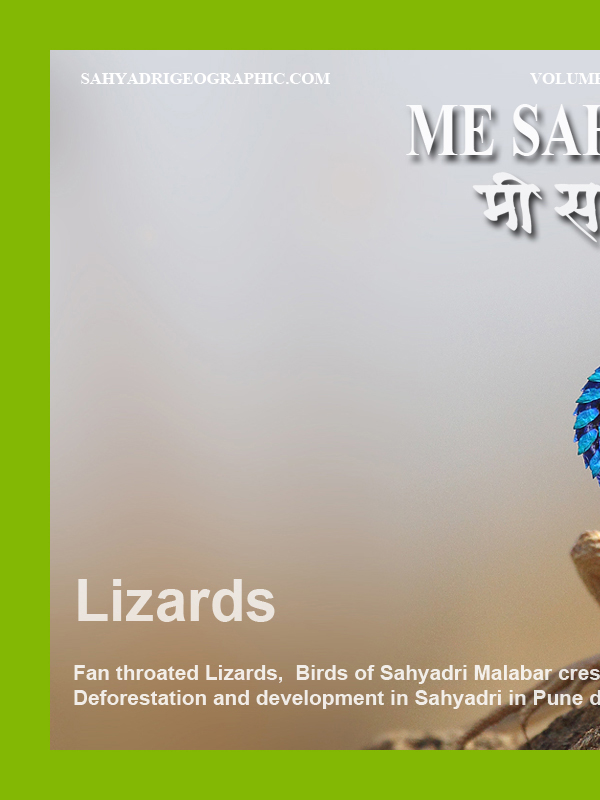 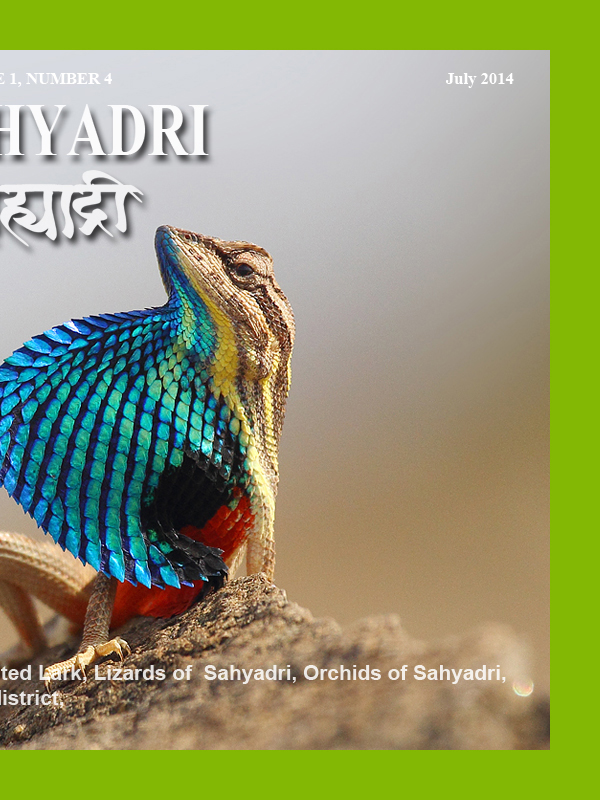 |
| |
| Me Sahyadri – July 2014
|
| |
|
|
या सदरात, सह्याद्रीच्या विविध घटकांबद्दल छायाचित्र व माहिती द्वारे तोंड ओळख मांडली आहे.
|
|
This journal introduces various elements of Sahyadri through brief information and photographs.
|
|
|
| |
  |
| The banner has been published here to improve the awareness of the trekkers and tourists visiting the various mountain forts, mountains in north western ghats. Please avoid accidents, by following good outdoor ethics such as no swimming in cisterns at mountain forts, no rock climbing without proper technical equipment and expertise. Please do not adventure, trek with any group or individually without understanding the risks associated. The frequency of the solo trekker fatalities have increased recently. Please strictly avoid solo treks. Please also avoid treks to mountains in large commercial groups, as it leads to damage to biodiversity of these high elevation ecological islands. Please respect the wildlife and biodiversity of the region. This has become more important as the ever increasing human interference is leading to severe damage to fragile ecosystems. Please be aware of the wildlife and biodiversity of the mountains before visiting these mountains. Please follow outdoor ethics. Follow ASI and Forest department rules. The concept of use of symbols for outdoor ethics was conceived and designed by "Sahyadri Trekker Bloggers Group". |
| |
|
|
| |
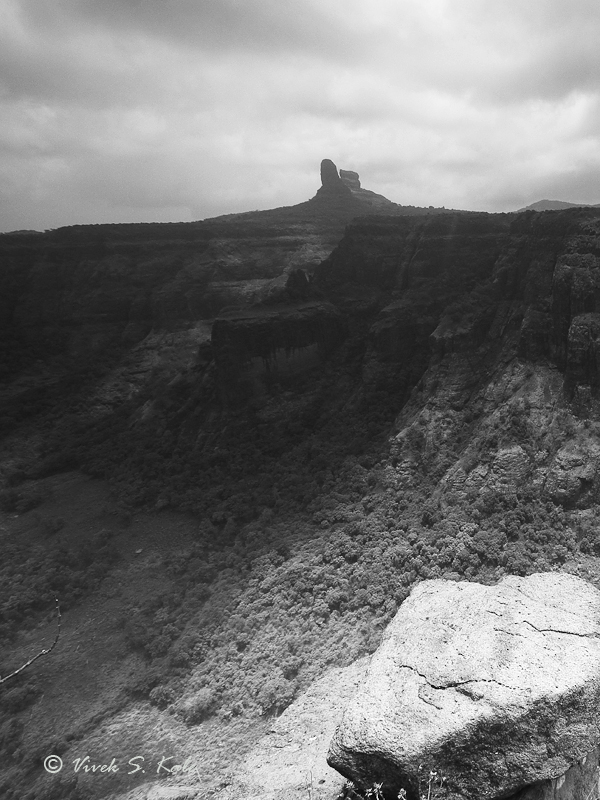  |
| |
| Deforestation in remote areas under the name of development with drought like scenario, western ghats, Pune district, India
|
| |
|
|
सह्याद्रीतल्या मोठया धरणांमध्ये कोयना धरण ओळखले जाते. महाराष्ट्रातच नव्हे तर दक्षिण भारतातल्या महत्वाच्या व मोठया धरणामध्ये या धरणाची गणती होते. धरणाची साठा क्षमता तब्बल २८० करोड क्युबिक मीटर आहे. यात प्रचंड पाणी साठवले जाते. एवढे पाणी संपुर्ण दक्षिण भारताला २ वर्षे पिण्यासाठी पुरु शकते. दुर्दैवाने हे पाणी मुख्यत्वे वीज वापरण्यासाठी वापरले जाते. त्याकरता पाणी कोकणात सोडले जात असल्याने ते समुद्रात जाऊन मिळते, व शेती व पिण्यासाठी वापरले जात नाही. यातुन १८००-१९०० मेगा वॅट वीज उत्पादन होते. एवढी वीज महाराष्ट्राच्या एकुण वीज उत्पादनाच्या १६-२० % आहे. एवढी वीज आपण करमणुकीसाठी खर्च करतो. जे पाणी आपण महाराष्ट्रासाठी ५-६ वर्षे पिण्यासाठी पुरवु शकतो, त्यावर आपण करमणुकीसाठी वीज उत्पादन करतो. पाण्यावर वीज उत्पन्न करणे कितपत योग्य आहे हा एक प्रश्न उपस्थित होतो. हे उदाहरण अवास्तव व अतिशयोक्ती आहे असे वाटले तरी यावर विचार होणे महत्वाचे आहे. सातारा जिल्ह्यातले माण सारखे दुष्काळी जिल्हे, मात्र कोयना धरणाच्या पाण्यापासुन वंचित आहेत. प्रगतीच्या नावाखाली होणारी जंगलतोड, पाण्याच्या स्त्रोतांजवळ होणारे उद्योगिकरण, प्रदुषण यावर नियंत्रण नाही. पश्चिम महाराष्ट्रातल्या उदभवत असलेल्या पाणीटंचाई ला आपणच जबाबदार आहोत. दुर्गम भागात प्रगतीसाठी होणारी जंगलतोड, परिस्थिती अजुन विदारक करणार यात शंका नाही. यामुळे धरणक्षेत्रात होत असलेली धुप ही एक गंभिर बाब आहे.
|
|
Out of many gigantic water reservoirs of western ghats, the major one if Koyna Dam in western Maharashtra. It has about 280 corore m3 capacity. It is almost equivalent to drinking water consumption of entire south India for two years. Instead most of water from this reservoir is used for generating electricity roughly about 1800 mega watt over year. Entire south India uses this amount of energy just for watching television for entertainment. (assuming that average houselhold uses TV for 4 hour). Though this example is extreme and hypothetical. It indicates about the wrong prioritization and lack of respect towards the variations in nature.
Heavy deforestation is happening all across western ghats, driven by free economy. Land grabbing for agriculture, rehabilitation, mining and rising leaving expenses are few reasons behind deforestation. As shown in image, the wet region of western ghats, is facing severe drought leading to alarming situation this year. As shown in the image, the deforestation in remote areas which are not monitored by any state or private bodies has become rampant, and will lead to complete destruction of unprotected forests in north western ghats within next 20-25 years time.
|
|
|
| |
 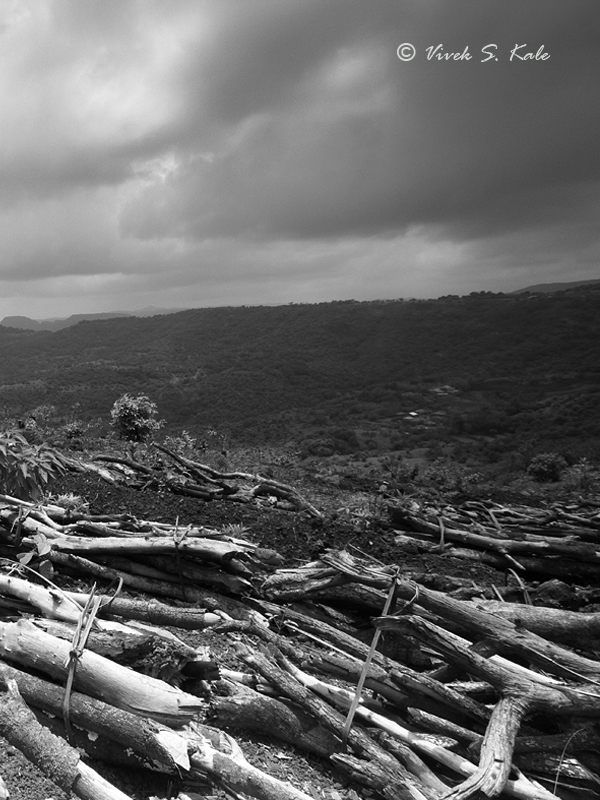 |
| |
| Deforestation in remote areas under the name of development with drought like scenario 2014 June, western ghats, Pune district, India
|
| |
|
|
पुणे जिल्ह्यात प्रगतीचे वारे वहात आहेत. दुर्गम भागात रस्ते होत आहेत. दुर्दैवाने भौगोलिक व जैववैविध्य लाभलेल्या सह्याद्रीत असलेल्या दुर्गम भागात रस्ते पोहोचत आहेत. या रस्त्यांमुळे या गावात प्रगतीसाठी होणारी उलाढाल होत आहे. शेती साठी जंगलतोड वाढत आहे. पाण्याचे स्त्रोत बदलले जात आहेत. गावाचा कायापलट करताना बुलडोझर व अवजड यंत्रे हातात पडल्यामुळे जमिनी व डोंगर उतार सपाट केले जात आहेत. जमिनी शहरी करणासाठी वापरल्या जात आहेत. जंगलाच्या मोळ्या केल्या जात आहेत. अशी ही प्रगती आता सिंगापुर मोहरी सारख्या दुर्गम भागात पोहोचल्यावर तेथे अत्यंत विदारक चित्र निर्माण झाले आहे.
|
|
The another image here shows the picture of hills around Singapur, Mohri villages located at the western ghat ridge in Pune district. The recent development of a road has lead to rapid destruction of the forests here. Along with road, now the large excavators and earth movers reached the villages located on the edge of the cliff. The natural water streams have been disturbed. Forests cut for plantation and agricultural purpose. The contours of hills damaged which eventually lead to landslides and loss.
|
|
|
| |
 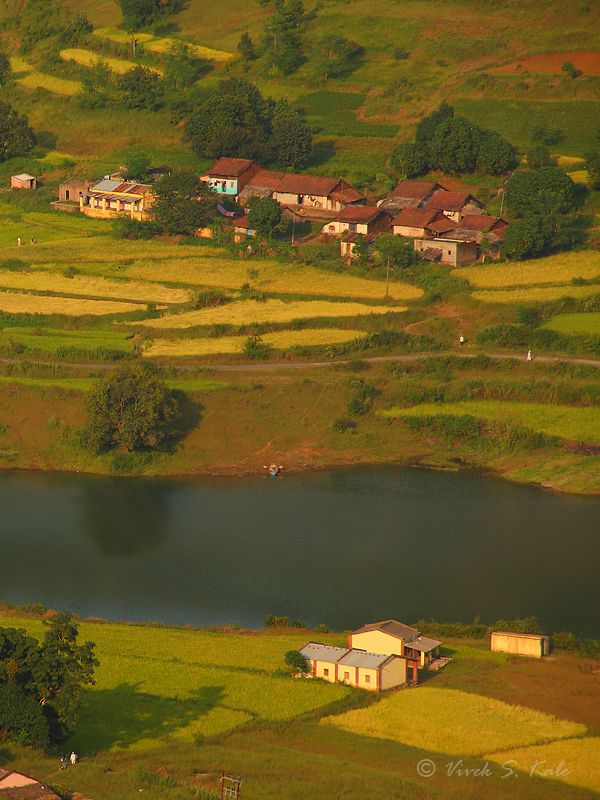 |
| |
| Prosperous back waters of Dimbhe backwaters,2013, Pune district, Western ghats, India
|
| |
|
|
गेल्या वर्षी संपुर्ण महाराष्ट्रात तुंबळ पाऊस पडला. सर्वत्र भरभराट झाली. पाण्याचे नियोजन झाले नाही. सर्व पाणी संपवण्यात आले. या सर्व भागात यंदा मात्र पाणी संकटामुळे सर्वांची परिक्षा आहे.
|
|
As can be seen in the image the region has some very prosperous belts with easy water availability all along the catchment area of small and large water reservoirs. It is now to be seen how the civilization manage the water shortage.
|
|
|
| |
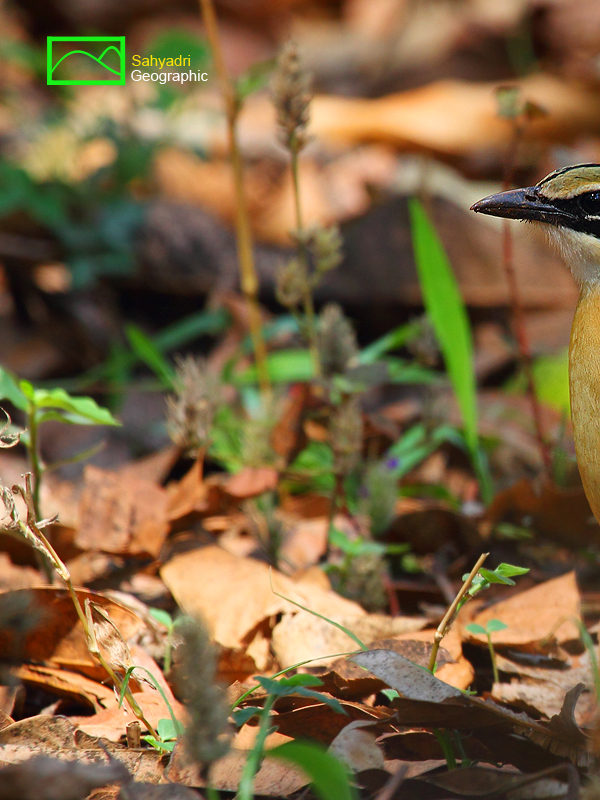 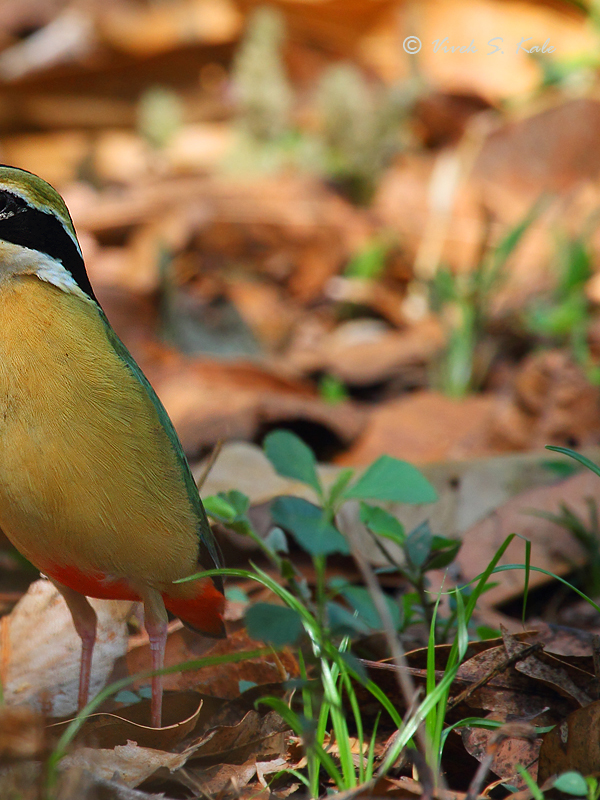 |
| |
| Indian Pitta , Ratnagiri district, , Maharashtra, India
|
| |
|
|
सह्याद्रीच्या डोंगर रांगा उत्तर दक्षिण पसरल्या आहेत. यामुळे या भागाचे २ भाग पडले आहेत. कोकण व दक्खन्चे पठार. कोकणात असलेल्या वेगळ्या वातावरणामुळे व भौगोलिक परिस्थितीमुळे तेथे आढळणारे बरेच जीव वर देशावर दिसत नाहीत. यातलाच एक आहे पिट्टा, किंवा नवरंग. हा पक्षी कोकण, गोवा, व सातपुड़्यात आढळतो. उन्हाळ्याच्या शेवटी तो कोकणात येतो. घरटे बनवण्यासाठी तयारी सुरु करतो. पावसाळ्यात त्याला पिल्ले होतात. पावसाळ्यात त्याला पिल्लांना भरवण्यासाठी भरपुर खाद्य उपलब्ध होते.
|
|
The western ghats divide the western Indian peninsula in to 2 plateaus.viz the lower one called as Konkan-Kerala and the upper one called as Deccan plateau. The Indian pitta is seen in monsoon as a migratory bird which arrives on the lower plateau of western ghat ridge, Konkan. The bird arrives here in May and starts preparing for its nest building and breeding.
|
|
|
| |
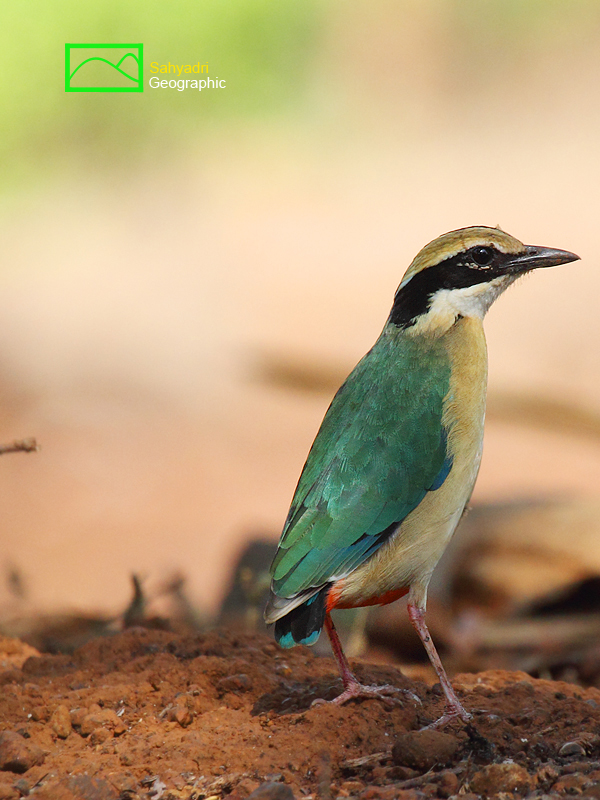  |
| |
| Indian Pitta , Ratnagiri district, , Maharashtra, India
|
| |
|
|
| |
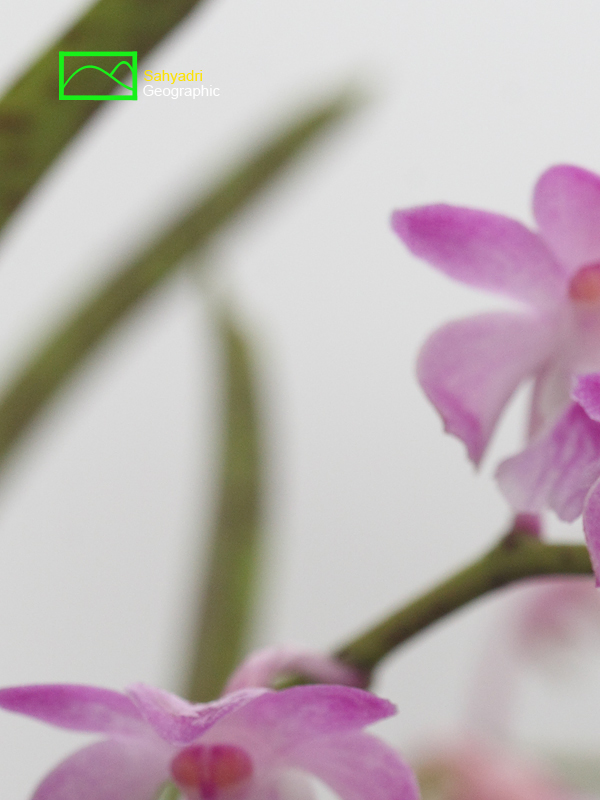 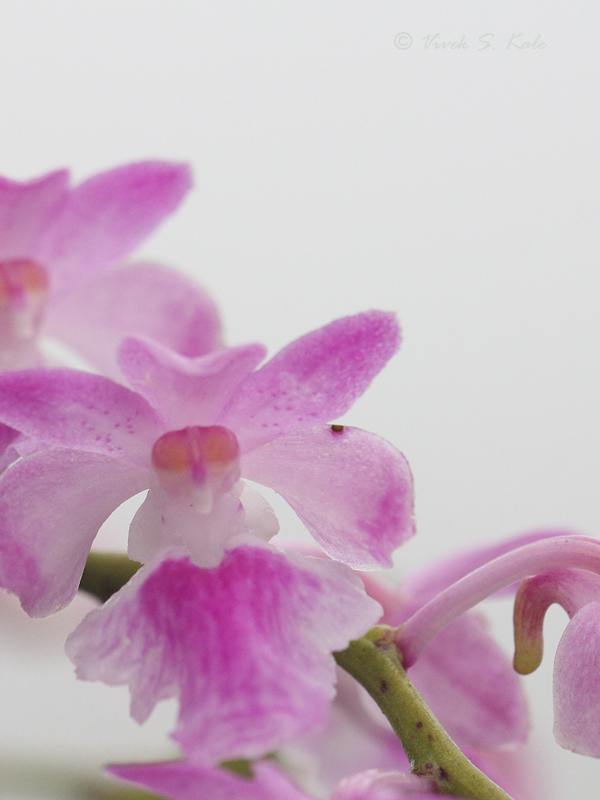 |
| |
| Aerides maculosum, epiphytic herb, Orchid, Western ghats, Pune district, India
|
| |
|
|
सह्याद्रीच्या डोंगर रांगा उत्तर दक्षिण पसरल्या आहेत. यामुळे या भागाचे २ भाग पडले आहेत. कोकण व दक्खन्चे पठार. कोकणात असलेल्या वेगळ्या वातावरणामुळे व भौगोलिक परिस्थितीमुळे तेथे आढळणारे बरेच जीव वर देशावर दिसत नाहीत. यातलाच एक आहे पिट्टा, किंवा नवरंग. हा पक्षी कोकण, गोवा, व सातपुड़्यात आढळतो. उन्हाळ्याच्या शेवटी तो कोकणात येतो. घरटे बनवण्यासाठी तयारी सुरु करतो. पावसाळ्यात त्याला पिल्ले होतात. पावसाळ्यात त्याला पिल्लांना भरवण्यासाठी भरपुर खाद्य उपलब्ध होते.
|
|
Western Ghats, one of the biodiversity hotspots in the world, harbours highest number of endemic orchid species found in Peninsular India. 123 species among the 130 endemic orchid species of peninsular India are found in different parts of Western Ghats, says the study. Among them, 95 species are strictly restricted to Western Ghats.
|
|
|
| |
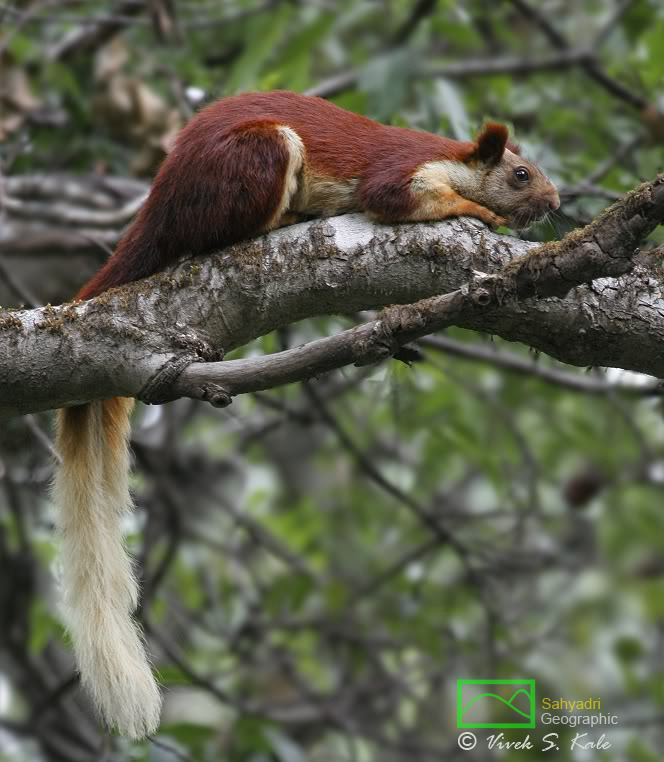 |
| |
| Malabar Giant Squirrel, Ratufa Indica, Bhimashankar wild life sanctuary, Pune district, western ghats, India
|
| |
|
|
शेकरु महाराष्ट्राचा राज्य प्राणी आहे. शेकरु खारिचा एक प्रकार आहे. आकाराने मोठी खार असल्याने या प्राण्याला जायन्ट असे म्हणतात. संवेदनशील असा हा प्राणी सह्याद्रीच्या सदाहरित जंगलात आढळतो. त्याच्या फार लहान अधिवासामुळे त्याचे महत्व जास्त आहे. तो जमिनीवर क्वचितच येतो. झाडांच्यावर आपले घरटे करतो. त्यातच तो व त्याची पिल्ले वास्तव करतात. झाडावरची फळे तो खातो. एका झाडावरुन दुसऱ्या झाडावर तो जातो. दोन झाडे वर जोडलेली असणे म्हणजे गच्च जंगल असणे हे या प्राण्यासाठी महत्वाचे आहे. भीमाशंकरच्या जंगलात तो आपल्याल पहायला मिळतो. |
|
The Scientific name of the Indian Giant Squirrel is "Ratufa indica". The one that is found in Bhimashankar is called as "Ratufa indica elphistoni". The Indian giant squirrel is "Vulnerable" species as per IUCN Red List. They are brown in colour with buff-coloured underparts. This animal is State animal of Maharashtra State. Shekaru is animal which lives all the time on trees, require continuous canopy of tall trees as its habitat. It rarely comes down on the ground. I also noticed the animal crossing the road, along the tree top canopy and coming back quite often. Continuity of the tree top canopy is very important for these animals. Any fragmentation of the canopy will make the survival of Shekaru difficult.
|
|
|
| |
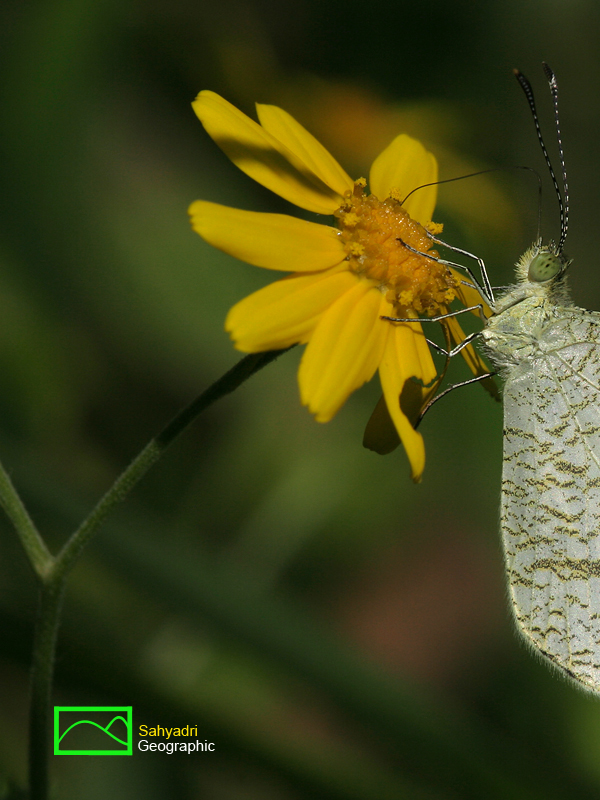 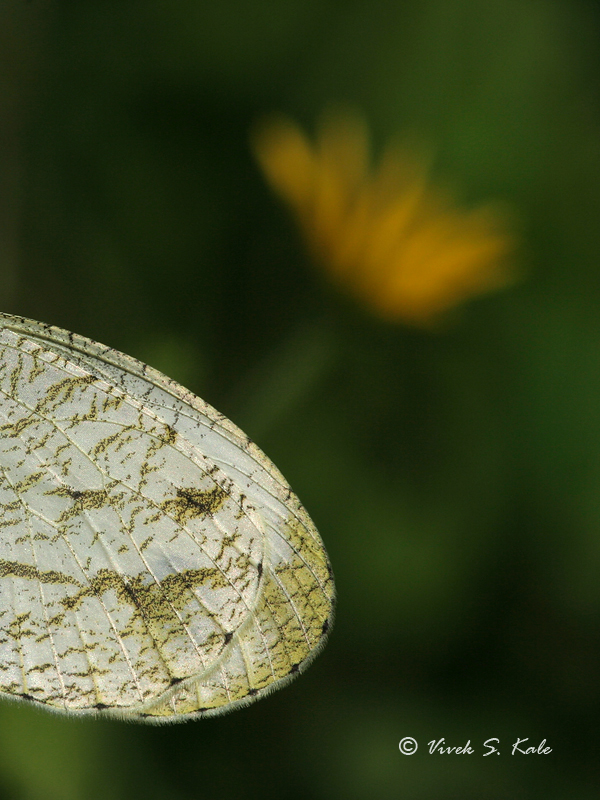 |
| |
| Leptosia Nina butterfly,(Psyche), western ghats, Pune district, Maharashtra, India
|
| |
|
|
सायके नावाचे हे फुलपाखरु अजिब असते. याचे उडणे अत्यंत नाजुक असते. कसे बसे उडणारे फुलपाखरु म्हणुन ते ओळखले जाते. हळुवार व दबकत ते जमिनीलगत उडताना दिसते.
|
|
The Psyche (Leptosia nina) is a small butterfly of the family Pieridae and is found in Southeast Asia and the Indian subcontinent. The upper fore wing has a black spot on a mainly white background. The flight is weak and erratic and the body of the butterfly bobs up and down as it beats its wings. They fly low over the grass and the butterfly rarely leaves the ground level.
|
|
|
| |
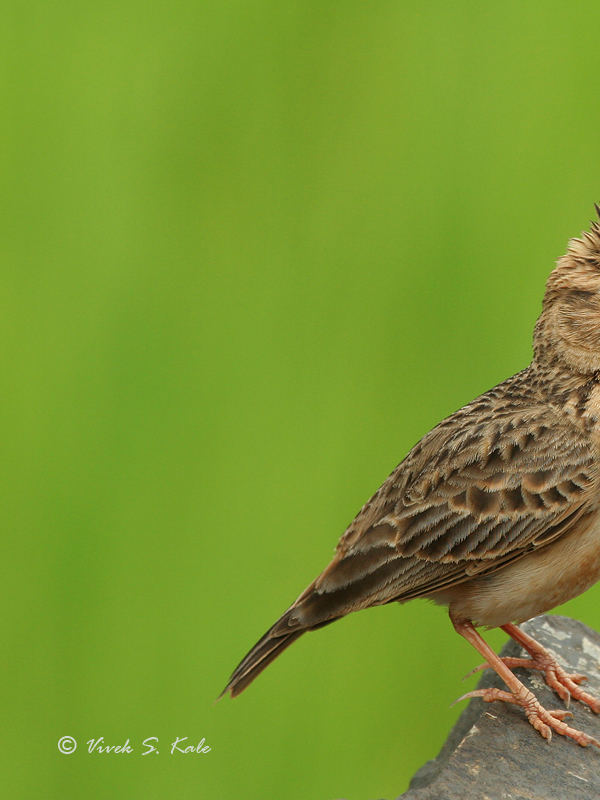 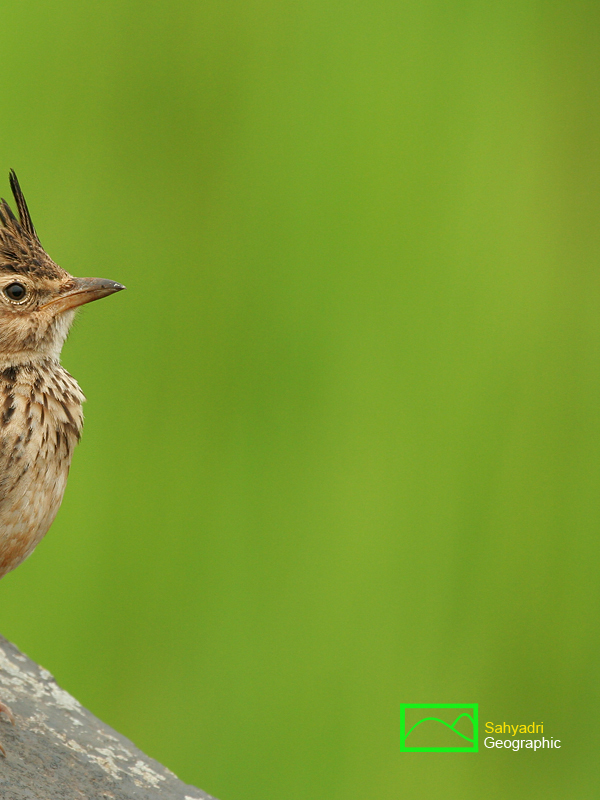 |
| |
| Malabar crested lark, western ghats, Maharashtra, India
|
| |
|
|
मलबार क्रेस्टेड लार्क किंवा चंडोल हा पावसाळ्यात घरटे करतो. जमिनीवर गवतात तो त्याचे घरटे करतो.
|
|
Malabar crested lark is one of many birds who breed during monsoon and post monsoon season. These birds nest on the ground in grass on hills and hill slopes.
|
|
|
| |
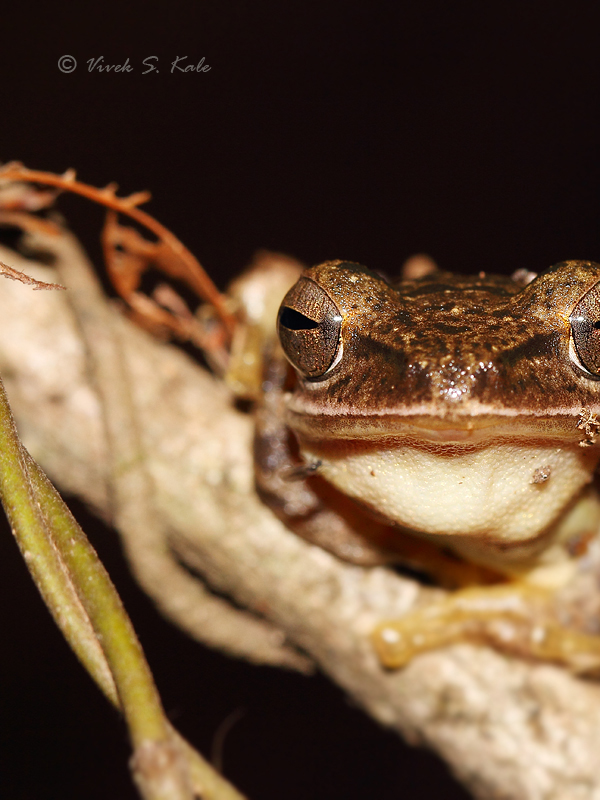  |
| |
| Tree Frog Polypedates species, Netravali, Goa, India |
| |
|
|
बिचारे बेडुक अडचणींना तोंड देत आहेत. जगातले बहुसंख्य बेडुक संकटात आहेत. तब्बल ३५ % जाती नामशेष होण्याच्या मार्गावर आहेत. गेल्या तिस वर्षातच १३० जाती नामशेष झाल्या आहेत. बुरशीने केलेले आक्रमण, प्रदुषण, अधिवासाचा विनाश, हवामान बदल, माणसाने केलेले बदल, अधिवासात माणसाने आणलेले नविन प्राणी यामुळे बेडुक संकटात आले आहेत.
|
|
Large number of frogs in the entire world have been affected by fungal disease, chytridiomycosis. In last 30 years about 130 species of frogs have become extinct Out of all species in world, 35 % species are threatened and are close to extinction. Apart from the fungal diseases, loss of habitat, deforestation, climate change, pollution, introduction of non native predators are the other reasons for fall in numbers of frogs all across the world.
|
|
|
| |
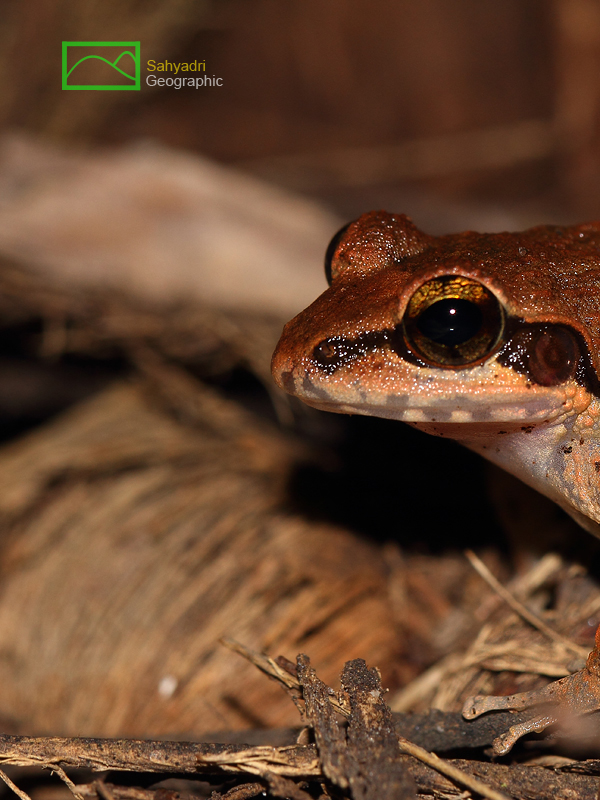  |
| |
| Indrani family Frog, Netravali, Goa, Western ghats, India
|
| |
|
|
| |
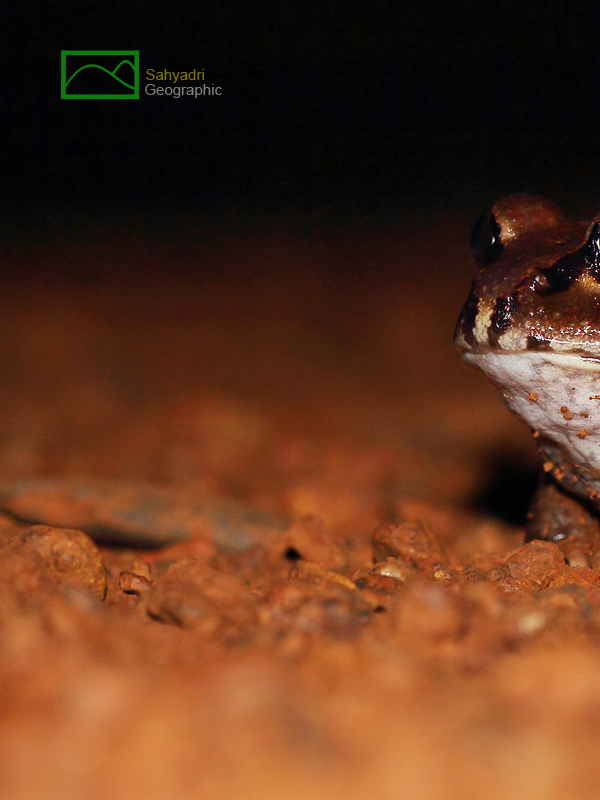 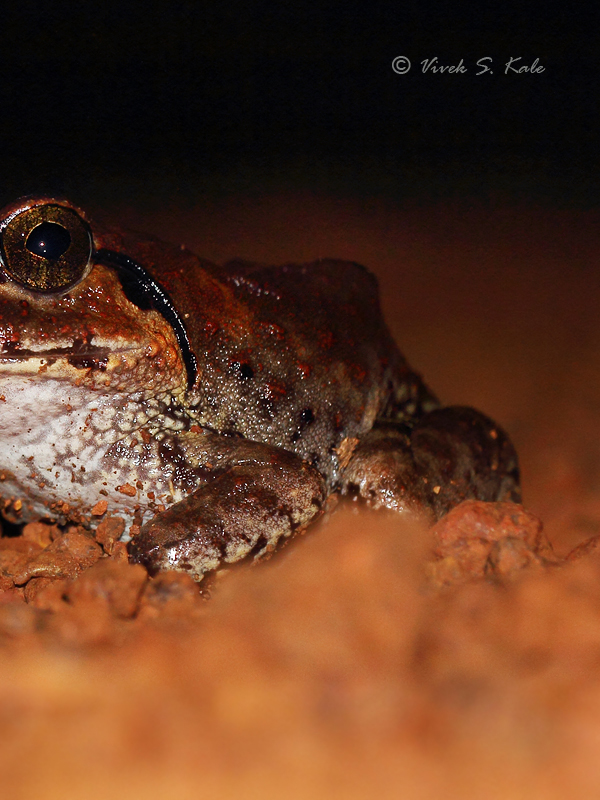 |
| |
| Sphaerotheca sp ( Burrowing frog ), Netravali, Goa, Western ghats, India
|
| |
|
|
| |
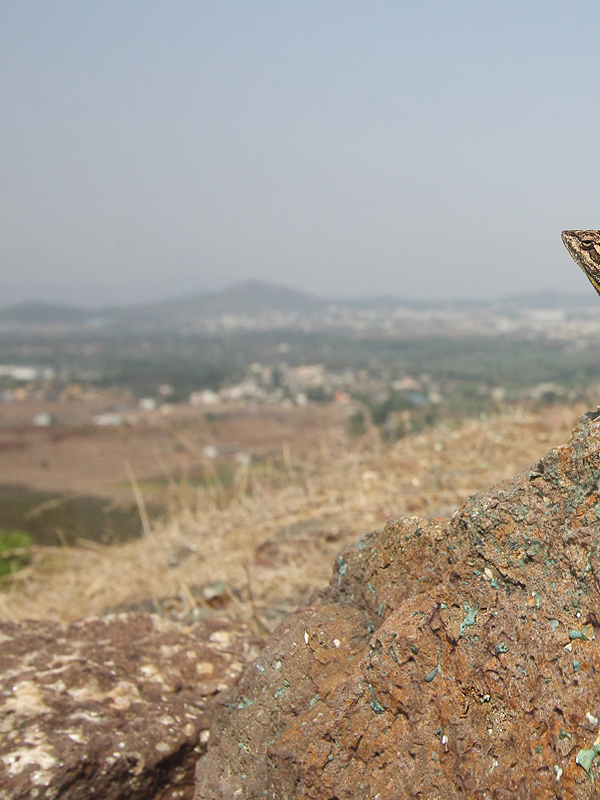 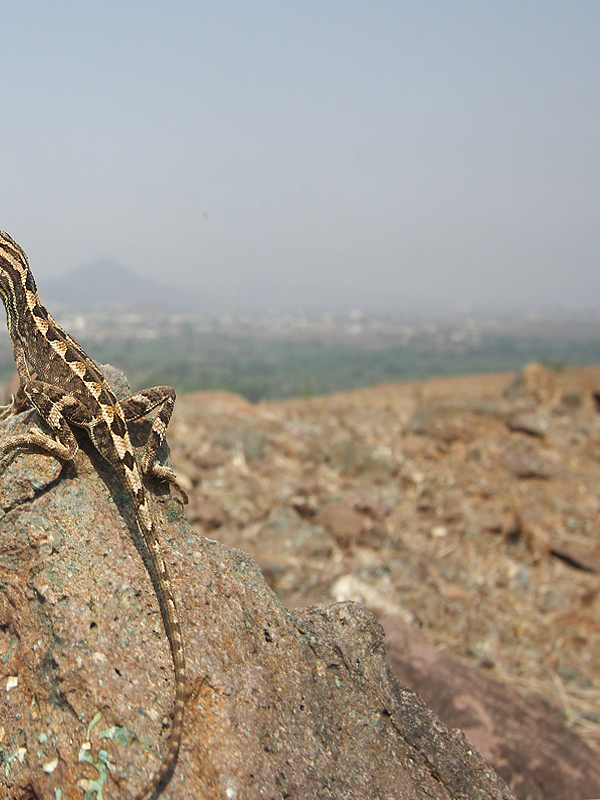 |
| |
| Man Versus Wild, Urban development slowly approaching habitat of Sitana ponticeriana, Western ghats hills near Pune, Maharashtra, India
|
| |
|
|
On our planet there are 6000 species of Lizards. The small reptiles with legs can be roughly be classified as Lizards and Agamas, Geckos, skinks. The large reptiles include snakes, shieldtails, crocodiles, and turtles. India has about 79 species of Geckos, 59 species of lizards, 56 species of skinks. Out of 59 species of lizards found in India, “Fan throated Lizard”, also called as
|
|
Sitana ponticeriana is singular for its display and behavior. It is from Agamaidae family of Iguania order. There are 450 species in Agamaidae family alone. Fan throated Lizards are found in South Asia, in India, Pakistan, Afganistan, Bangladesh, west china and srilanka. Despite of its ubiquity (common occurrence) , fan throated lizards are little studied species.
|
|
|
| |
 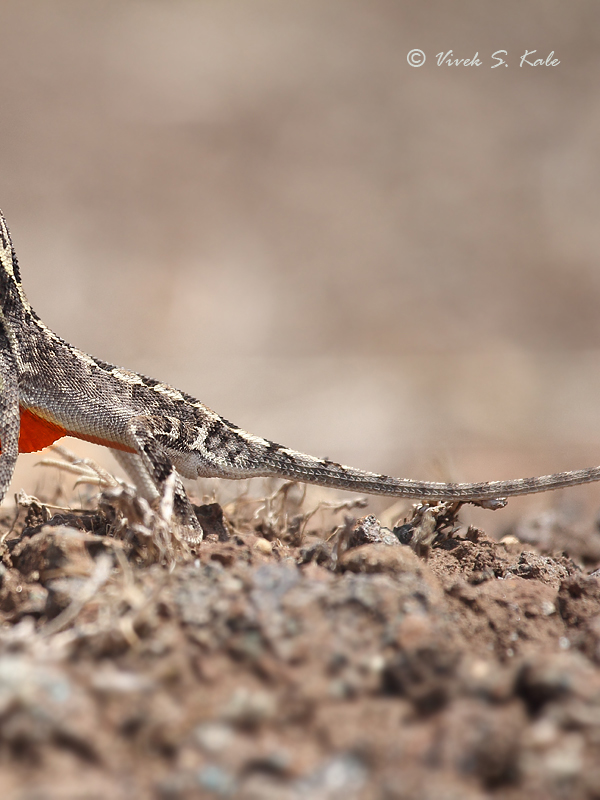 |
| |
| Sitana ponticeriana, fan throated lizard, Pune district, western ghat, dry region, India
|
| |
|
|
This species throw many questions to the onlooker. For any armature naturalist, the species attracts the individual towards the world of Lizards. The species has three variants viz. Colored fanned, intermediate fanned and white fanned. In Summer days the male species display themselves to
|
|
attract females. Many types of lizards engage in this activity. Their display and brightly colored body ornaments, are functionally equivalent to the birdsongs and plumage. Most of the lizards from Iguanide, Lacertidae and Agamidae families show complex display behaviors and brightly colored ornaments.
|
|
|
| |
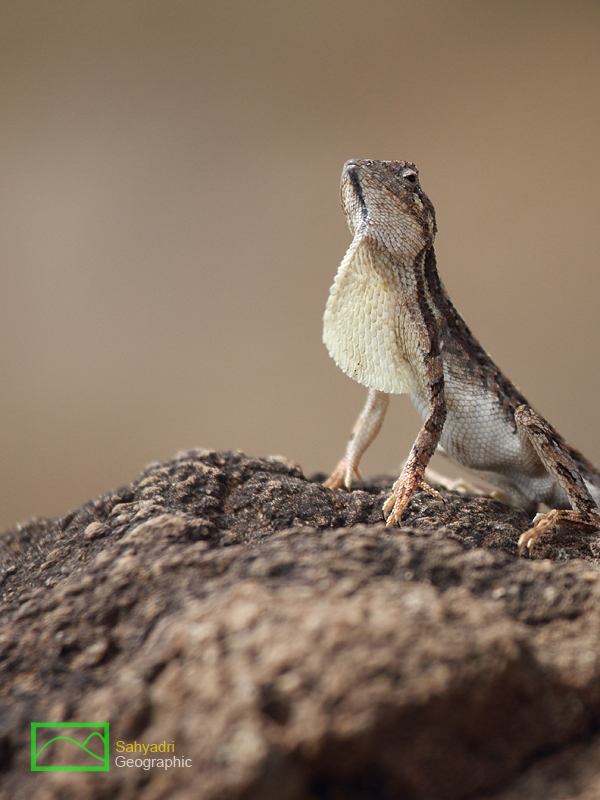 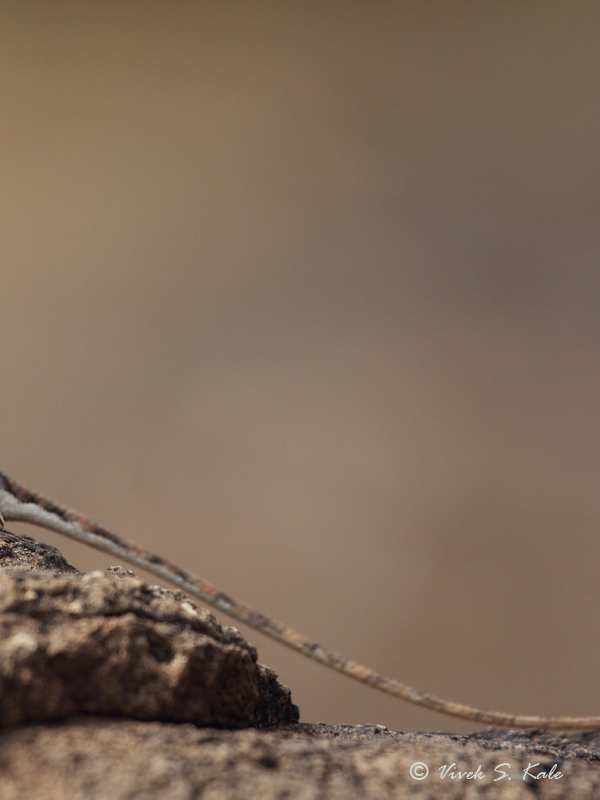 |
| |
| Sitana ponticeriana, fan throated lizard, Pune district, western ghat, dry region, India
|
| |
|
|
The fan throated lizard is otherwise a highly camouflaged lizard seen in the drier rocky habitat. It has a dewlap under its lower jaw. A dewlap is a longitudinal flap of skin that hangs beneath the lower jaw or neck of the vertebrates. It is nothing but pendulous mass of skin. Many reptiles have |
|
dewlaps of varying shape and size with different colors. The colors of dewlaps are often different than the main colors of the body of lizard. In case of fan throated lizard the dewlap is blue, orange red and black, with few yellow scales near the throat. The dewlap of white fanned lizard is white with light yellow shade.
|
|
|
| |
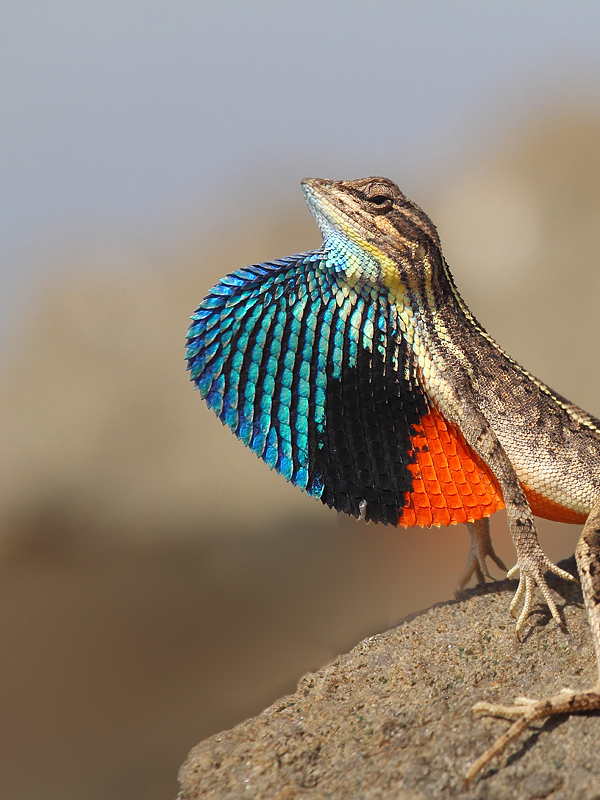 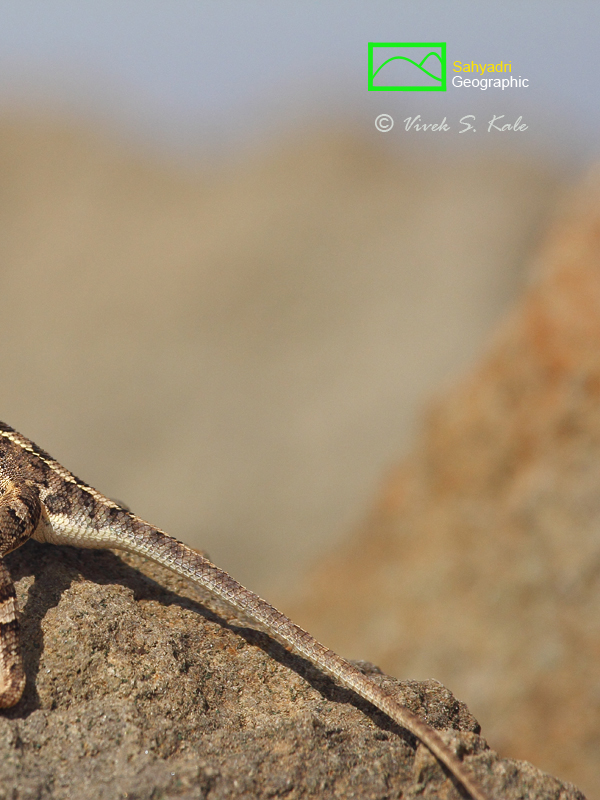 |
| |
| Sitana ponticeriana, fan throated lizard, Pune district, western ghat, dry region, India
|
| |
|
|
The dewlap of fan throated lizard is concealed when not in use. It uses it for display during mating season, primarily to attract the females. The females do not have dewlap. The males also use it for display to combat the opponent male or to defend its territory. Sometimes the fan throated
|
|
lizards also use the display to ward off the ground predators. However during the display, if it encounters the presence of any preying bird or animal, it immediately stops the diplay and conceals its dewlap, to avoid the attention.
|
|
|
| |
 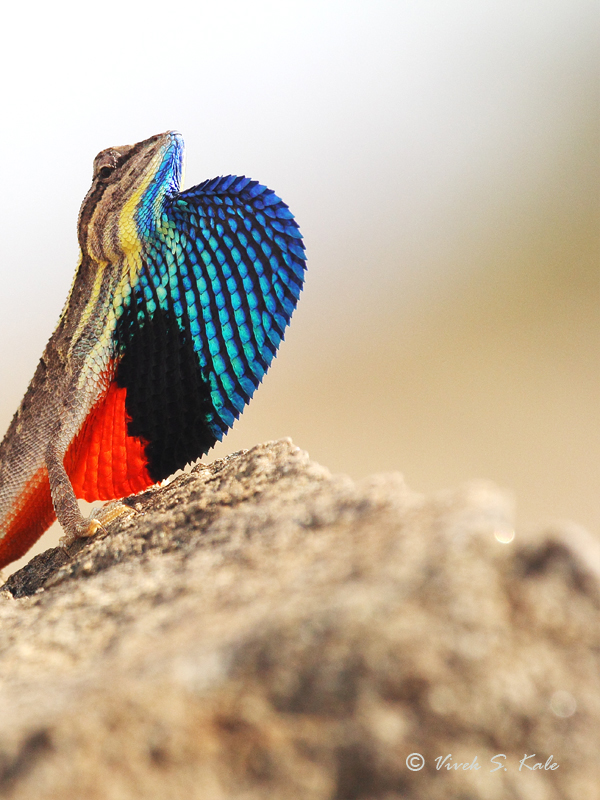 |
| |
| Sitana ponticeriana, fan throated lizard, Pune district, western ghat, dry region, India
|
| |
|
|
Apart from displaying the dewlap the fan throated lizards engage in various activities. Some of the important behaviour of fan throated lizards are, showing aggression, chasing of males by each other, combat with other males, display or fanning of dewlap by perching on the tall rock or plant,
|
|
fore leg pushups, standing on hind legs, running on hind legs, push-ups of entire body in to the air (jumping), tail twisting, tail twitching, and approaching female in a circular or curved path.
|
|
|
| |
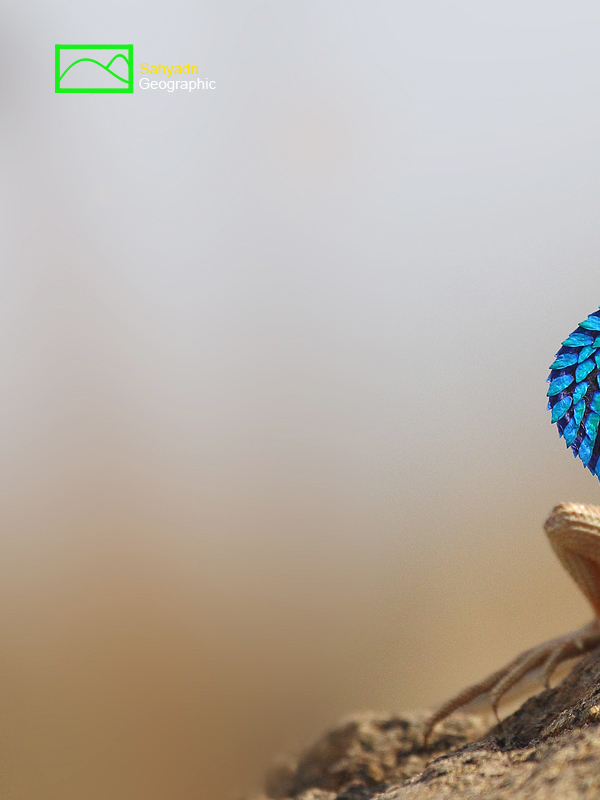  |
| |
| Sitana ponticeriana, fan throated lizard, Pune district, western ghat, dry region, India
|
| |
|
|
These fan throated lizards display dewlap in various fashions. While standing on the higher rock, to show its domination, it holds the dewlap open fanned out for long time. However while approaching the female before mating, it rapidly fans out and in the dewlap. While standing on the
|
|
tall rocks, often its dewlap display is affected by the wind. The lizards on the hills, often face strong winds. Despite of the wind, fluttering the sitanas seems to fan out the dewlap, without getting disturbed by wind.
|
|
|
| |
|








































